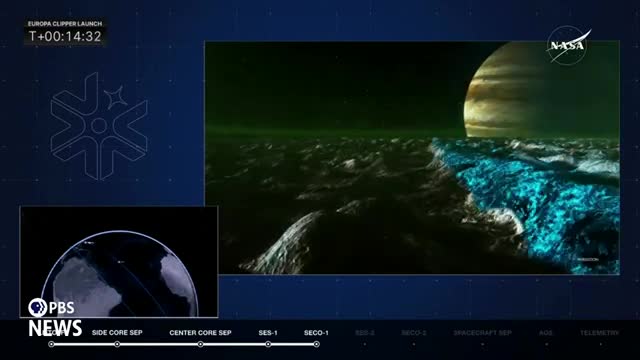NASA's Europa Clipper launches on groundbreaking quest for life
This article was created by AI summarizing key points discussed. AI makes mistakes, so for full details and context, please refer to the video of the full meeting. Please report any errors so we can fix them. Report an error »

In a recent government meeting, officials celebrated the successful launch of NASA's Europa Clipper mission, which aims to explore the icy moon of Jupiter, Europa. The spacecraft is equipped with advanced technology to map the gravity field of Europa, potentially revealing insights into its subsurface ocean and the conditions that may support life.
JPL Director Lori Leshin highlighted the significance of the mission, noting that it represents a collective effort from over 4,000 individuals across various organizations. She expressed gratitude for the dedication of the teams involved, particularly those who remained at the Jet Propulsion Laboratory during a recent hurricane.
The Europa Clipper mission is not just a scientific endeavor; it embodies humanity's quest to understand our origins and the possibility of life beyond Earth. Leshin emphasized the importance of planetary exploration in answering fundamental questions about life in the universe.
A unique aspect of the mission includes a \"vault plate\" carrying a poem by U.S. Poet Laureate Ada Limon and the names of 2.6 million Earth residents, echoing the Voyager Golden Record tradition of sending messages into space.
As the spacecraft embarks on its journey, key milestones include the separation from the rocket's upper stage and the deployment of solar arrays, crucial for powering the mission. The spacecraft will also perform a gravity assist flyby of Mars in four months, marking the beginning of its long journey to Jupiter.
The excitement surrounding the launch reflects a broader enthusiasm for space exploration and the potential discoveries that await.
JPL Director Lori Leshin highlighted the significance of the mission, noting that it represents a collective effort from over 4,000 individuals across various organizations. She expressed gratitude for the dedication of the teams involved, particularly those who remained at the Jet Propulsion Laboratory during a recent hurricane.
The Europa Clipper mission is not just a scientific endeavor; it embodies humanity's quest to understand our origins and the possibility of life beyond Earth. Leshin emphasized the importance of planetary exploration in answering fundamental questions about life in the universe.
A unique aspect of the mission includes a \"vault plate\" carrying a poem by U.S. Poet Laureate Ada Limon and the names of 2.6 million Earth residents, echoing the Voyager Golden Record tradition of sending messages into space.
As the spacecraft embarks on its journey, key milestones include the separation from the rocket's upper stage and the deployment of solar arrays, crucial for powering the mission. The spacecraft will also perform a gravity assist flyby of Mars in four months, marking the beginning of its long journey to Jupiter.
The excitement surrounding the launch reflects a broader enthusiasm for space exploration and the potential discoveries that await.
View full meeting
This article is based on a recent meeting—watch the full video and explore the complete transcript for deeper insights into the discussion.
View full meeting